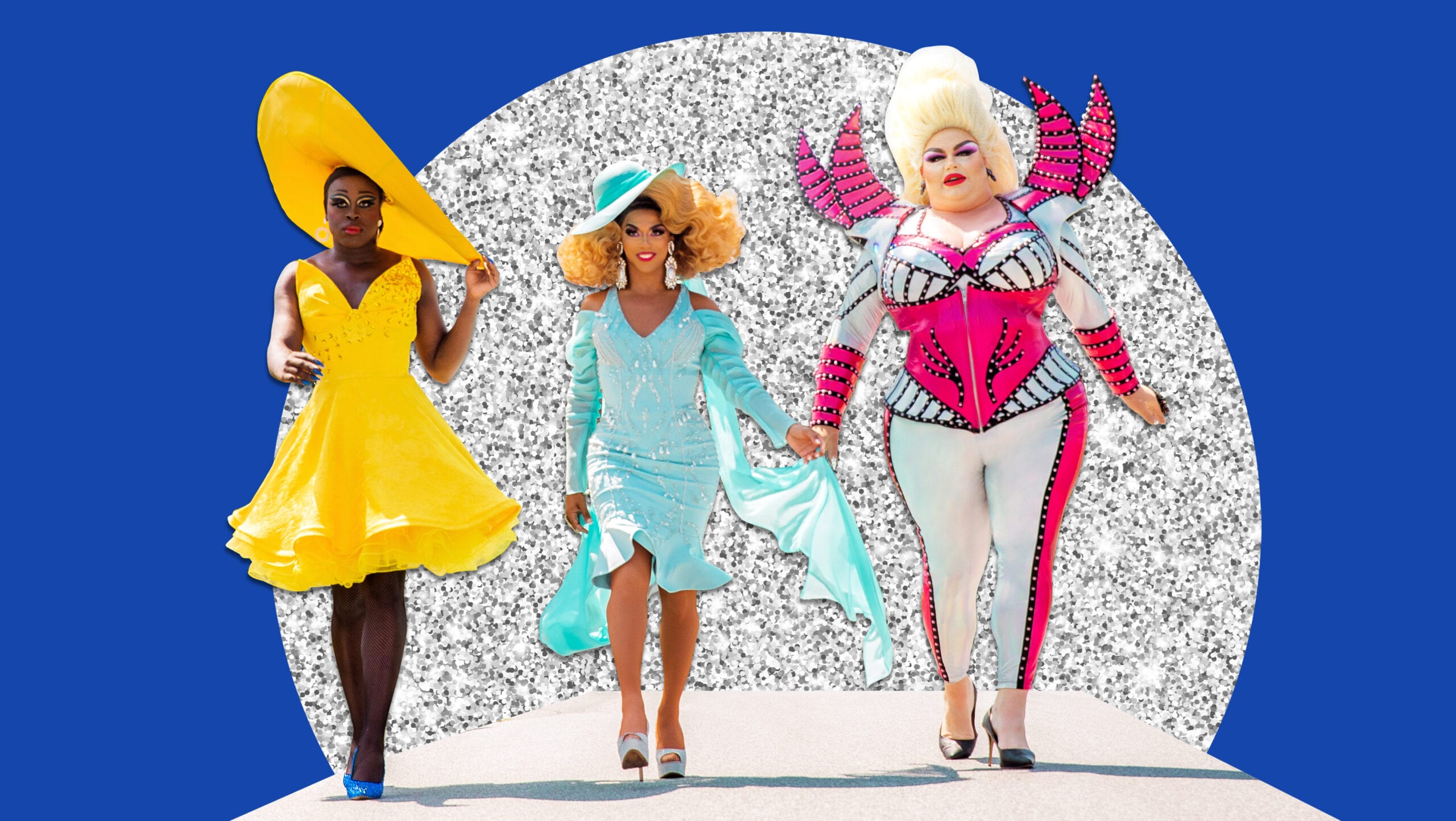The show almost never changed. Each Saturday night—at least before COVID-19 struck—the crowd inside The Lookout, one of Ottawa’s few gay bars, would prepare for local drag queen Yaya Torres’ show-stopping performance of “Let It Go.” The crowd would part and give way to Torres as she sauntered to the stage, the chilly opening chords of the Frozen anthem filling the packed attic dancefloor. She would begin to melodramatically lip sync, as she swooped the long sleeves of her velvety indigo gown over the crowd to the gradually quickening rhythm of the song. The audience would scream along, transfixed by the immense charisma of their beloved ice queen. As the song crescendoed, Torres’ energy would grow, and that final, climactic lyric of the bridge, “The past is in the past,” would be punctuated by the explosion of a confetti cannon, detonated by someone who had inconspicuously slinked to stage left.
I’ve probably seen this exact performance on five separate occasions, but it never felt any less euphoric.
It’s been three months since I last made my pilgrimage to The Lookout—and it seems like it’ll be a while longer until I go back. In mid-March, when the Ontario government implemented physical distancing measures to keep COVID-19 at bay, the bar closed to the public—and it’s not the only one. Formerly bustling, queer-friendly spaces across the world are currently functionless, hollow shells, leaving many without the ability to enjoy the specifically comforting experience that is being a queer person at a drag show. Thankfully, the magic of television has swooped in to fill the void.
HBO’s We’re Here follows international drag superstars Bob the Drag Queen, Eureka and Shangela as they trek through small-town America, wielding the power of drag to change lives (and put on some explosive shows along the way). Each episode features people connected to the queer community who, for one reason or another, are in need of a healthy dose of empowering drag. They are paired up with one of the show’s stars, who transforms them into fabulous drag queens, helping them with their struggles along the way.
The series premiered last week to an audience that has been physically severed from their community spaces for weeks—a severance that is set to last indefinitely. We’re Here fills a void left by some of the shortcomings of the seemingly unstoppable juggernaut of queer media, RuPaul’s Drag Race. Between the sexual misconduct of one of the latest season’s frontrunners, Sherry Pie, and RuPaul Charles’ recent announcement that he is fracking on his Wyoming ranch, Drag Race—the alma mater of We’re Here’s three stars—is facing more heat than ever before. But where Drag Race places its bets on over-produced feuds and the inherent drama of cutthroat competition, We’re Here doubles down on what queer people are desperately craving in the face of COVID-19—community, empowerment and representation.
For host Shangela, the show couldn’t be premiering at a better time.
“We’re all locked down, we have this stay at home order,” she says in a phone interview from her grandmother’s home in Paris, Texas. “A lot of people are feeling isolated and alone. I think this show is coming along right at the right time.”
“‘We’re Here’ doubles down on what queer people are desperately craving in the face of COVID-19—community, empowerment and representation.”
We’re Here also documents some incredibly raw moments. In Episode 2, for example, Shangela travels to Twin Falls, Idaho to help out a trans man and his wife. The man, Brandon, comes from a less than supportive family, but Shangela joins him for a tangibly uncomfortable sit-down dinner with his parents and siblings. Brandon’s sister says she doesn’t agree with his “choices,” but wants his happiness.
Although Shangela imparts some thoughtful wisdom on how the family can best support Brandon, the dinner is fairly innocuous. There’s no explosive argument, outright transphobia nor salaciously dramatic moments. The scene is just quietly uncomfortable, dissonantly awkward. It’s what’s left unsaid that’s powerful and real—it’s the story of a real-life queer person, with a real-life family who loves him but does not accept his queerness. It’s a subtle scene that’s playing out for queer people across the world right now, who may be sequestered with loving but unaccepting families.
Eureka, one of the show’s hosts, says We’re Here highlights highly relatable stories. She says the scene with Brandon and his family is an excellent example of that.
“You can see how it would be uncomfortable being that young man talking with his family that doesn’t really want to talk about it,” she says. “You can feel the loneliness and the weird energy. I think it’s gonna really speak to a lot of people because these are stories that are talked about but never discussed in this way.”
Eureka says she’s also aware of how the show’s message shifted under COVID-19. With everybody experiencing a new kind of isolation, she feels We’re Here could generate some empathy for queer people among its non-queer viewers who may be experiencing extreme solitude for the first time.
“Hopefully the show will show them that we’ve been feeling alone, we’ve been feeling hopeless and we’ve been feeling stressed,” Eureka says, emphasizing those uncomfortable states everyone is living with right now.
While Eureka, Shangela and Bob the Drag Queen infuse each episode with infectious effervescence and fluorescent energy, We’re Here is not all rainbows and lollipops. The queens’ bubbly confidence does not render them immune to the ignorance pervading the small towns they travel to. In one episode, as the trio walks around Branson, Missouri (in full drag), a white shop owner calls the police on them for standing outside his “Indian Jewelry Crafts” store. The pop soundtrack grinds to a halt as they are told they have to “move from the premises.”
“It was a sobering reality check that these are the experiences of some drag queens in small towns,” Shangela says. “Just because we were international successful divas didn’t mean that, to those people, we were not just a man dressed as a woman standing outside of their door that they did not like. But that’s what we signed up for. We signed up to go to small towns to really shine a light on what some of the experiences are for gay people and for drag queens every day.”
Each episode of We’re Here finishes with the queens transforming their mentees into stunning drag performers, and each person gets to put on the performance of a lifetime. The shows are often presented as life-changing for the people involved, but they’re also just really great drag performances. We’re Here succeeds best at documenting the incredible power that fostering queer community can have.
“I hope that what this show inspires is more compassion for humanity,” Shangela says. “It really showcases the importance of human connection and support.”
“‘We’re Here’ succeeds best at documenting the incredible power that fostering queer community can have.”
Drag queens have long been the guardians of the queer community. Drag isn’t just entertainment: It’s catharsis, it’s community, it’s queerness personified. Amid the pandemic, drag certainly hasn’t stopped in Ottawa; a couple of Lookout’s regular performers are hosting weekly shows via Instagram Live. But the city’s most prominent queer space is gone, and with it the ability for queer people to physically gather and participate in some good old-fashioned communal catharsis.
Even before physical distancing measures, Ottawa’s LGBTQ2 community was scattered; there is no proper gay village, the Pride parade has never possessed the feel or iconic status of its Montreal and Toronto counterparts and spaces like Lookout are few and far between. But somehow, during the weekend, when a gaggle of queers gathers in a downtown attic to watch Yaya Torres perform “Let It Go” for the umpteenth time, it feels like a sanctuary. The singular solitude of living in a city unwilling to carve out space for you washes away for a moment, and you’re with people like you, screaming out the lyrics to a Disney song, hypnotized into believing that the past is, indeed, the past.
Watching We’re Here makes me relive the euphoria I felt while watching a drag queen’s confetti cannon explode onto a reverent crowd—a confirmation that this feeling isn’t restricted to some attic gay bar in Ottawa. And until we can leave our houses and rejoice in the presence of our local drag performers, we’re lucky to have a show like We’re Here to keep us warm.
We’re Here airs Thursdays at 9 p.m. EST on HBO and Crave.


 Why you can trust Xtra
Why you can trust Xtra


